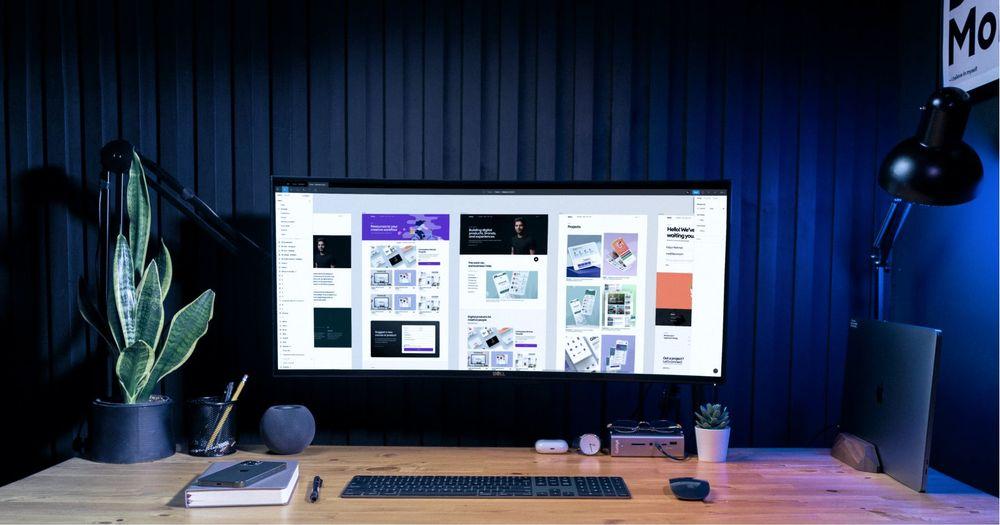UI Designer – Top Learning Platforms to Boost Your UX Skills in 2024
Are you aspiring to become a UI Designer in the education technology sector? Whether you’re seeking opportunities in universities, colleges, or schools, mastering leading UI/UX design skills is essential to stand out. In 2024, education technology (edtech) continues to evolve, with institutions prioritizing superior user experiences for students and faculty. This comprehensive guide highlights the best learning platforms to elevate your UI/UX skills, along with actionable tips and benefits for job seekers targeting edtech roles.
Why UI Designers Are in Demand in Education Technology
The digital transformation of education has increased the reliance on intuitive learning management systems, interactive educational apps, and accessible online resources. Universities and schools are seeking skilled UI Designers who can:
- Create engaging digital experiences for diverse student populations
- Optimize user flows in learning platforms
- Ensure accessibility and usability across devices
- Collaborate with educators to align with pedagogical goals
With robust UI/UX skills,you’ll not only enhance learning outcomes but also enhance your employability in the growing edtech field.
Top Learning Platforms for UI/UX Design Skills in 2024
Continuous learning is key to excelling as a UI Designer, especially in the fast-paced edtech landscape. Here are the top platforms that offer updated,industry-relevant courses to boost your UI/UX skills for educational environments:
1. Coursera
- Specializations: Offers comprehensive UI/UX design courses from leading universities such as CalArts and the University of Michigan.
- Highlights: Real-world projects, peer feedback, and certifications valued by employers in education technology.
- Suitable For: Beginners and those seeking advanced UX methodologies for learning environments.
2. Udemy
- Specializations: Budget-friendly courses covering UI design,prototyping,and user-centered design specific to eLearning.
- Highlights: Lifetime access, diverse teaching styles, and frequent updates on tools like Figma, Sketch, and Adobe XD.
- Suitable For: Self-paced learners who want a flexible route to building practical UI portfolios.
3. LinkedIn Learning
- Specializations: Expert-led courses focusing on UX for education apps, storytelling in interface design, and accessibility standards.
- Highlights: Integration with your professional profile and learning paths tied to educational institutions’ needs.
- Suitable For: Professionals looking to network and display skills on their LinkedIn profiles for recruiter visibility.
4. Interaction Design Foundation (IDF)
- Specializations: Deep-dives into the theory and practise of interaction design, including usability, wireframing, and cognitive psychology for eLearning.
- Highlights: Membership-based with access to a vast library, mentoring, and certification exams.
- Suitable For: Designers who wish to gain a research-backed understanding of educational user experiences.
5. Designlab
- Specializations: UI/UX bootcamps with mentorship, aimed at helping you build effective design portfolios for education technology roles.
- Highlights: Hands-on projects, career support, and real feedback from industry professionals.
- Suitable For: Those pivoting from other design roles or starting from scratch in edtech UI design.
6. FutureLearn
- Specializations: Short courses on designing educational technologies, accessible UX principles, and inclusive interface development.
- Highlights: Collaborations with major universities focusing on digital learning and assessment.
- Suitable For: Educators and UI Designers targeting specialized edtech skillsets.
essential UI/UX Skills for EdTech Job Seekers
Along with platform-driven learning, UI Designers targeting educational institutions should focus on core skills, including:
- user Research: Conducting studies with students and educators to inform design decisions
- Wireframing & Prototyping: Using contemporary tools (Figma, Adobe XD, Sketch) to visualize user journeys
- Accessibility: Designing for users with disabilities, adhering to WCAG and ADA standards
- Responsive Design: Creating seamless experiences for mobile, tablet, and desktop users
- usability Testing: Iteratively improving designs through feedback from actual learners and teachers
- Collaboration: Working closely with developers, instructional designers, and academic stakeholders
Benefits of Using Online Learning Platforms for UI Designers in EdTech
- Versatility: Learn at your own pace while juggling current work or study commitments.
- Industry-Relevant curriculum: Courses are updated to reflect latest trends in UI/UX and education technology.
- Portfolio Development: Access to projects tailored for edtech,increasing your chances of employment.
- Certification: Showcase your new skills with digital badges or certificates recognized by universities and employers.
- Community: Engage with other learners, network with mentors, and stay updated with edtech opportunities.
Practical Tips to Land a UI Designer Role in Education Technology
- Build an EdTech-Focused Portfolio: Include case studies on learning platforms, educational apps, or accessibility improvements for schools and colleges.
- Highlight Relevant Tools & Methods: Showcase proficiency in Figma, Sketch, Adobe XD, Axure, and demonstrate your user research capabilities.
- Stay Updated with Trends: Follow blogs and resources that focus on user experience in education environments.
- Network with Educators & EdTech pros: Attend virtual conferences, webinars, or online meetups to deepen your industry connections.
- Seek Feedback: Regularly ask for feedback from mentors, teachers, and users to refine your edtech-centric designs.
- Pursue Certifications: Credentials from reputable platforms increase credibility and make your request stand out for university roles.
- Understand Accessibility: Become proficient in designing interfaces accessible to diverse learners, a critical requirement in educational institutions.
Key Considerations When choosing a Learning Platform
- Course content: Ensure the curriculum covers modern UI/UX principles with an emphasis on educational settings.
- Mentorship: Opt for platforms offering mentorship or peer reviews for personalized guidance.
- Certification Value: Choose programs that provide certifications recognized by schools, colleges, or leading edtech firms.
- Hands-on Practice: Prioritize platforms with project-based learning and real-world edtech scenarios.
- Community Support: Engage with active communities to gain insights and share experiences.
Conclusion
The demand for talented UI Designers in education technology is higher than ever. By leveraging top learning platforms in 2024, you can master essential UI/UX skills, develop a compelling edtech portfolio, and position yourself as a prime candidate for roles at universities, colleges, and schools. With dedication, up-to-date knowledge, and an understanding of educational users’ unique needs, your journey into edtech as a UI Designer will be both rewarding and impactful. Start learning, keep practicing, and prepare to shape the future of digital education!

